- Quick Read
- Deep Read ( 7 Min. )

Why is Christian Science in our name?
Our name is about honesty. The Monitor is owned by The Christian Science Church, and we’ve always been transparent about that.
The Church publishes the Monitor because it sees good journalism as vital to progress in the world. Since 1908, we’ve aimed “to injure no man, but to bless all mankind,” as our founder, Mary Baker Eddy, put it.
Here, you’ll find award-winning journalism not driven by commercial influences – a news organization that takes seriously its mission to uplift the world by seeking solutions and finding reasons for credible hope.
Explore values journalism About usMonitor Daily Podcast
- Follow us:
- Apple Podcasts
- Spotify
- RSS Feed
- Download
TODAY’S INTRO
Dinosaur fossils that ‘should not exist,’ and nearing the big bang
 Mark Sappenfield
Mark Sappenfield
By its nature, science reveals the extraordinary. But there are moments when it opens windows that astonish even scientists themselves. Today might not go down in the history books, but two new discoveries are a reminder of how science can peel back layers of the extraordinary.
In one find, paleontologists in North Dakota say they have uncovered fossils of creatures that died the day an asteroid hit the Earth 66 million years ago, wiping out the dinosaurs. Among the highlights is an almost perfectly preserved dinosaur leg with skin still intact, and the remains of fish that appear to have breathed debris from the asteroid impact more than 1,800 miles away. “This really should not exist and it’s absolutely gobsmackingly beautiful,” Phil Manning, a professor at the University of Manchester who is working with the researchers, told the BBC’s “Today” radio program. “I never dreamt in all my career that I would get to look at something a) so time-constrained, and b) so beautiful, and also tells such a wonderful story.”
Elsewhere, astronomers have found what might be the oldest galaxy ever seen – some 13.5 billion light-years away. If confirmed, that would mean we’re looking at a galaxy only 330 million years after the big bang, when the universe was still taking baby steps toward what it would become.
Fabio Pacucci of the Harvard-Smithsonian Center for Astrophysics told The New York Times he’s as “excited as a kid who spots the very first firework in a magnificent and highly anticipated show.”
From North Dakota to the edges of space, science’s show of discovery never fails to amaze.
Share this article
Link copied.

Help fund Monitor journalism for $11/ month
Already a subscriber? Login

Monitor journalism changes lives because we open that too-small box that most people think they live in. We believe news can and should expand a sense of identity and possibility beyond narrow conventional expectations.
Our work isn't possible without your support.
What Ukraine war means for globalization
The globalized economy gave rise to greater interdependence and mutual prosperity. The Ukraine war threatens to redivide the world. How one country responds could be decisive: China.

Russian consumers of luxury European goods and American fast food are learning the lessons of what economists describe as the “deglobalizing” effects of the Ukraine war. So are families in developing countries dependent on Ukrainian wheat, and even German automakers whose supply chains for parts run through Ukraine.
But do the war and Western efforts to punish Russia portend the end of heightened globalization?
Some analysts point to Europe’s newfound determination to wean itself from Russian energy, and Russian President Vladimir Putin’s efforts to forge an alternative to the Western-led global economy, and conclude that indeed globalization is down for the count. But many others caution that no one should expect its full demise.
Michael Desch, a Notre Dame professor of international relations, notes, “There are elements of globalization that ... are going to be hard to undo, no matter who wants to move beyond them.”
And Mary Lovely, a senior fellow at the Peterson Institute for International Economics, says China will be the economic behemoth to monitor for clues to globalization’s prospects.
“The Chinese are going to double down on making sure they are not going to be as vulnerable as Russia to Western pressures,” she says, “while at the same time acting to protect their position in the global economy.”
What Ukraine war means for globalization

Fans of Britain’s Chelsea football club were shocked to discover early last month that Russia’s war in Ukraine meant they could no longer buy tickets to the team’s matches or purchase Chelsea gear.
The reason: Chelsea’s owner, Russian oligarch Roman Abramovich, a close associate of Russian President Vladimir Putin, was slapped with Western sanctions barring him from profiting from his properties. The issue was soon resolved with an agreement that redirects team profits to victims of the Ukraine war.
Still, the disruption gave Chelsea fans the smallest of tastes of how Russia’s invasion of a neighboring country in violation of international law is having an impact on globalization.
In similar ways, Russian consumers of luxury European goods and American fast-food offerings are learning the lessons of what a growing number of international economists describe as the “deglobalizing” effects of the Ukraine war and Western efforts to punish Russia for launching it. So are families in developing countries dependent on Ukrainian wheat, and even German automakers whose supply chains for parts run through Ukraine.
But does the war portend the end of the post-Cold War era of heightened globalization? The decadeslong trend creating more interdependent economies has streamlined the production of goods even as it extended supply chains, shifted production to developing countries while extending prosperity to hundreds of millions, and created vast fortunes for businesses able to navigate the new global topography.
Some economists and historians point to proliferating news items – Moscow’s shuttered McDonald’s restaurants, rising bread prices in Tunisia and Bangladesh because of undelivered Ukrainian wheat, Europe’s newfound determination to wean itself from Russian energy sources, and Mr. Putin’s accelerated efforts to forge an alternative to the Western-led global economy – and conclude that indeed, globalization is down for the count.
But many others caution that while an era of globalization already in retreat is likely to retreat further as a result of the war, no one should expect the full demise of the globalized economy or the international liberal order that fostered it.
Realignment
Instead, some look at the “new world order” of “like-minded nations” that Russian Foreign Minister Sergey Lavrov touted in Beijing last week and see the Ukraine war prompting an economic realignment to a world that is less global, more ideological, and increasingly characterized by division into camps.
The Ukraine war may be exposing the limits of a hyper-interconnected world, some say, but it is not likely to spell the end of globalization.
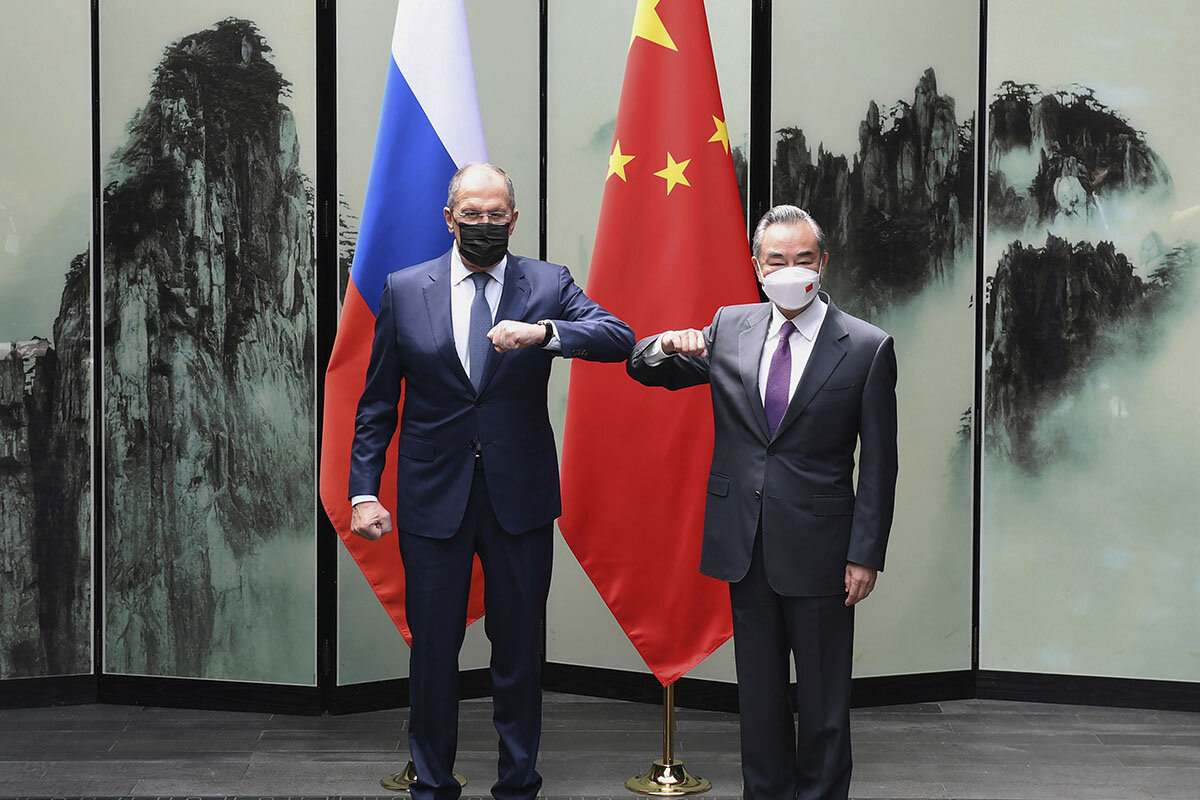
“I see two contradictory trends operating simultaneously, where on the one hand the larger economic conflict around the Ukraine war has accelerated the existing trend away from globalization in a significant way,” says Michael Desch, a professor of international relations at the University of Notre Dame and founding director of the university’s International Security Center.
“But on the other hand,” he adds, “we are realizing there are elements of globalization that have turned out to be quite durable – or at least are going to be hard to undo, no matter who wants to move beyond them.”
Two examples of the not-easily-undone side of globalization: China’s extensive integration into global supply chains, and Europe’s dependence on Russian energy supplies.
Indeed, the European Union moved forward this week with a proposal to ban all Russian coal imports, even as it struggles with the more difficult goal of weaning Europe off Russian oil and natural gas.
What the Ukraine war has provided, Dr. Desch says, is a “fresh lesson” in the limits of globalization.
“In case anyone needed a reminder,” he says, “we’re seeing that the grand liberal vision of globalization unifying the planet under a single economic and eventually single political system has turned out to be a chimera.”
Embracing nationalist policies
What seems clear is that globalization was already in a gradual retreat from its heyday over a decade ago – well before Russia launched the first invasion on European soil in nearly 80 years.
International trade as a percentage of world gross domestic product peaked in 2008 and shows no signs of recovering its zenith, according to the World Bank. The World Trade Organization hasn’t begun any global trade initiatives in over a decade, while even subglobal trade deals like the Trans-Pacific Partnership or the U.S.-European Union Transatlantic Trade and Investment Partnership have foundered.
Moreover, even many of the world’s major beneficiaries of international trade and a globalized system have turned away from globalization and inward to embrace nationalist policies. Those range from the United States’ lurch to the “America First” policies and trade wars of Donald Trump, to China’s “Made in China 2025” initiative that aims to replace China’s dependence on foreign cutting-edge technology with domestic high-tech developers.
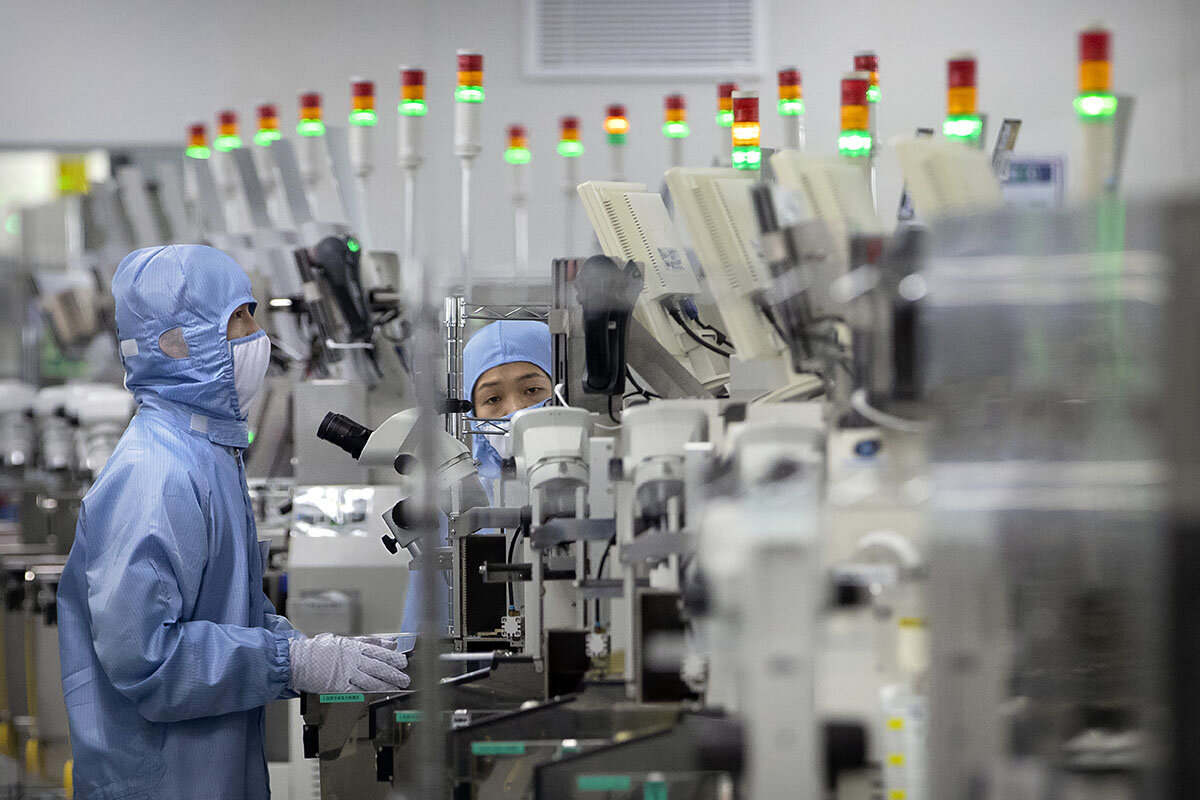
The COVID-19 pandemic and the fragilities it revealed in global supply chains of everything from vaccines to protective equipment have provided renewed impetus for what some are calling the “post-globalization” trends, from “near-shoring” and regionalization of supply chains to repatriating of production.
Now enter Russia’s war in Ukraine, which adds urgency to some “deglobalizing” efforts, some experts say, while potentially birthing new, more ideologically tinged initiatives as well.
“We’ve seen the splintering and bifurcating of the globalized system and post-Cold War international order for quite some time, but the war in Ukraine already appears to be accelerating and deepening that splintering and bifurcating,” says Craig Singleton, a senior fellow at the Foundation for the Defense of Democracies in Washington.
“The countries leading the charge against Russia over its invasion of Ukraine may indeed be responsible for a significant portion of the global economy, but China and Russia have only accelerated their quest to build an alternative architecture to the Western-led system,” he says.
“And contrary to popular belief, Russia and China are not nearly as isolated internationally as we would like to believe,” adds Mr. Singleton, who specializes in international organizations and technology innovation.
He notes that India is working to establish a rupee/ruble exchange mechanism that would use nationalized Indian banks to bypass international sanctions on trade with Russia.
At the same time, Brazil, which imports 85% of its fertilizer needs and is largely dependent on Russia for potash and other key fertilizer components, is reportedly considering upping Chinese fertilizer imports or implementing a yuan payment system to keep the fertilizer imports flowing.
What China needs
Indeed, China is likely to be a key factor in determining how significantly the Ukraine war affects globalization, some experts say.
“China has been looking for ways to protect itself from Western sanctions since well before this war, but this crisis will just quicken their movement in that direction,” says Mary Lovely, a senior fellow at the Peterson Institute for International Economics in Washington.

The problem for China is that while it rejects Western sanctions and is fully on board ideologically with Russia’s vision of a “new” economic order free of U.S. and Western domination, it remains the world’s largest exporter with an economic model still dependent on a globalized world.
“The Russia-China partnership is rooted more in mutual loathing of the U.S. than in similar thinking on this new ‘order,’ and Beijing will remain wary of any actions that damage its economic performance,” says Mr. Singleton. “But we’re going to see a growing focus on ways Russia and China can establish leverage over Western countries and weaken their influence in other markets,” he adds.
Two examples of sectors he says both countries can use to “fight back”: Russia’s role in global energy markets, and China’s dominance of the so-called rare earths – lithium, cobalt, terbium, and other related elements – essential to high-tech products including computers, cellphones, electric vehicles, and many armaments.
The Peterson Institute’s Dr. Lovely says China will be the economic behemoth to monitor for clues to globalization’s prospects, while the U.S.-China relationship and continued efforts by both great powers toward economic “decoupling” will also bear watching.
“The Chinese are going to double down on making sure they are not going to be as vulnerable as Russia to Western pressures, while at the same time acting to protect their position in the global economy,” she says.
“They’ll continue to try to straddle those two priorities,” Dr. Lovely says – noting the Chinese used the word “invasion” to describe Russia’s war when meeting recently with European leaders, even as they fill state media with Russian propaganda and blame the West for the war.
“The question now,” she says, “is how long China will be able to keep up that straddling.”

Jackson confirmed. Why was it such a nailbiter?
Ketanji Brown Jackson was confirmed as the first Black female Supreme Court justice Thursday. But the vote shows how both the country and the Supreme Court have changed.

- Quick Read
- Deep Read ( 8 Min. )
In a historic vote today, the U.S. Senate confirmed Judge Ketanji Brown Jackson as the first Black woman to join the U.S. Supreme Court. The 53-47 vote was split largely along party lines, with three Republicans supporting her.
Over the past several decades, the Senate has gone from approving most Supreme Court nominees by generous, bipartisan margins to nearly deadlocking over them. Is this just a reflection of an increasingly polarized Congress – and country? Or are there other dynamics driving the shift?
The answer is both. All the forces deepening the partisan divide have contributed to a more politicized confirmation process. As the court is seen as increasingly powerful, and directly influencing everyday life in America, it’s raised the political stakes. That has led to the removal of guardrails like the filibuster, which once effectively required bipartisan support for nominees. Senators see their role as vetting not only the qualifications and character of nominees but also their judicial philosophy.
“The court increasingly is seen as just another branch of government, rather than above politics,” says Democratic Sen. Richard Blumenthal of Connecticut, who serves on the Senate Judiciary Committee. “There’s no question that the more political the court becomes, the more seems to be at stake.”
Jackson confirmed. Why was it such a nailbiter?

In a historic vote today, the U.S. Senate confirmed Judge Ketanji Brown Jackson as the first Black woman to join the U.S. Supreme Court.
“What a great day it is for the United States of America, for our system of government, and the grand march of the fulfillment of the sacred covenant we have as an American people: e pluribus unum – out of many, one,” said Sen. Raphael Warnock, a pastor of Martin Luther King’s church in Georgia, on the Senate floor. “Ketanji Brown Jackson’s improbable journey to the nation’s highest court is a reflection of our own journey, through fits and starts, toward the nation’s ideals.”
The 53-47 vote was split largely along party lines, with three Republicans supporting her.
Over the past several decades, the Senate has gone from approving most Supreme Court nominees by generous, bipartisan margins to nearly deadlocking over them. Is this just a reflection of an increasingly polarized Congress – and country? Or are there other dynamics unique to the Supreme Court driving the shift?
The answer is both. All the forces deepening the partisan divide have contributed to a more politicized confirmation process for the country’s most powerful court. At the same time, the court is increasingly seen as directly influencing everyday life in America, putting more at stake politically. That has led to the removal of certain guardrails, such as the filibuster, which effectively required bipartisan support for nominees. Senators see their role as vetting not only the qualifications, character, and integrity of nominees but also their judicial philosophy or ideology. And if they don’t, they know they could be punished in the next election – in part because of the growing influence of outside groups advocating for or against nominees.
“The court increasingly is seen as just another branch of government, rather than above politics,” says Democratic Sen. Richard Blumenthal, a former Supreme Court clerk and U.S. attorney for Connecticut who now serves on the Senate Judiciary Committee. “There’s no question that the more political the court becomes, the more seems to be at stake.”
From the Bork hearings to today
In 1987, then-Sen. Joe Biden invited constitutional law scholar Laurence Tribe to help him prepare for the confirmation hearings of President Ronald Reagan’s controversial Supreme Court nominee Robert Bork.

They spent hours together, with the liberal Harvard professor playing the role of Judge Bork in mock murder boards. “It was kind of an awkward fit,” admits Professor Tribe, now a professor emeritus at Harvard.
But there was a bigger question Senator Biden was wrestling with as chairman of the Senate Judiciary Committee: What criteria should they use to evaluate Judge Bork? Republicans were focusing more and more on judicial philosophy, Professor Tribe recalls Mr. Biden saying. Should Democrats do the same?
The proceedings showed where he came down on that question. Chairman Biden led a charged confirmation hearing in which he and other senators interrogated Judge Bork on his originalist interpretation of the Constitution. They ultimately rejected his nomination, and gave the English language a new verb: to bork someone.
While many Republicans see the Bork nomination as a turning point, the Supreme Court confirmation process didn’t immediately turn into an all-out partisan war. The next year, Anthony Kennedy was unanimously confirmed. And Clarence Thomas – whose controversial hearings were dominated by Anita Hill’s charges of sexual harassment – ultimately got the support of 11 Democrats in his 1991 confirmation. Likewise, Republicans overwhelmingly supported Ruth Bader Ginsburg, confirming her with a 96-3 vote.
Republicans and Democrats disagree about when things started really going downhill.
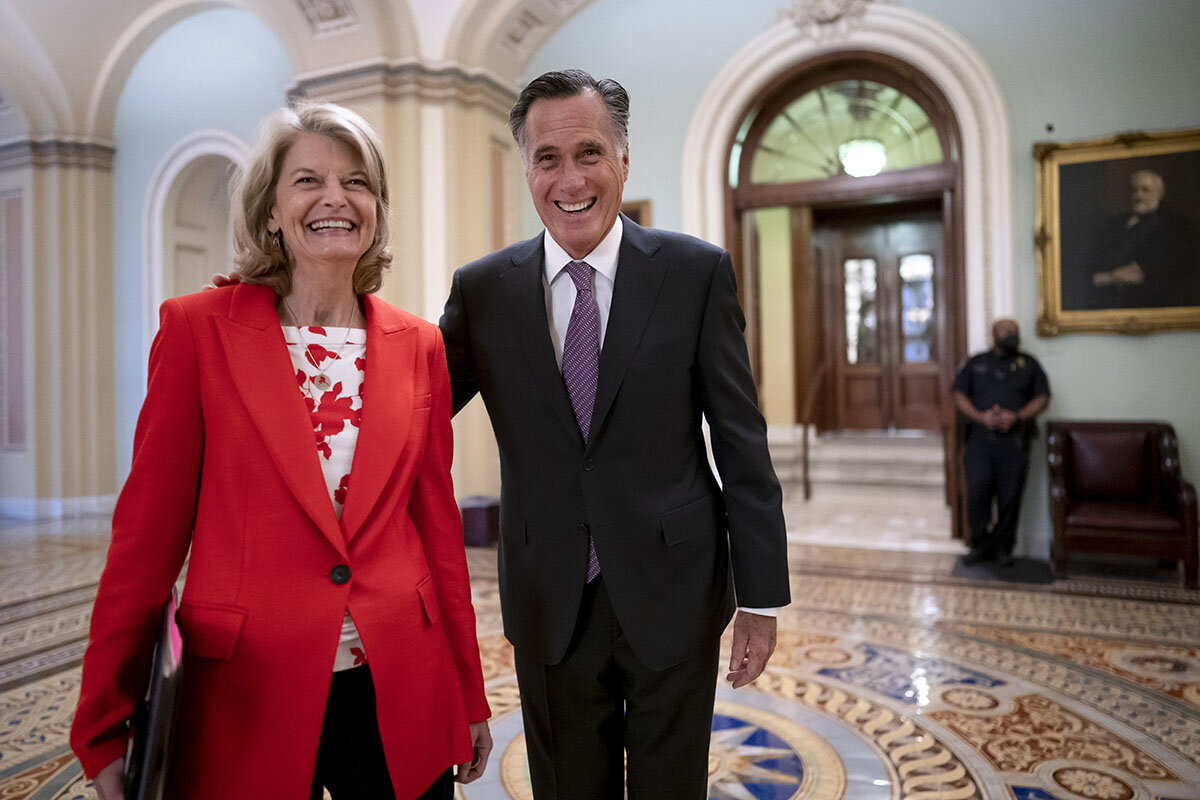
One of the Senate’s longest-serving Republicans says he believes much of the trouble began at a Democratic retreat held in Farmington, Pennsylvania, in 2001 – the year after the Supreme Court had decided the presidential election in favor of Republican George W. Bush.
“[Sen. Charles Schumer, then chairman of the Judiciary Committee,] said that we’re going to now start thinking about judicial philosophy and holding people up that we don’t like,” says Sen. Charles Grassley of Iowa. “It’s been downhill ever since.”
Professor Tribe, whom Senator Schumer brought in to speak to that group in Farmington, along with his Harvard colleague Cass Sunstein, disputes that interpretation.
“That makes it look like we were springing some new approach of an ideological veto – that wasn’t the case,” he says. From the country’s earliest days, he adds, it had been common to consider judicial philosophy. “We were simply saying that the Democratic Party should wake up.”
Over the past two decades, Supreme Court nominees from both parties have been confirmed with steadily decreasing margins, from John Roberts (78-22) in 2005 to Elena Kagan (63-37) in 2010 to Amy Coney Barrett (52-48) in 2020.
While the hearings for Justice Roberts were at times contentious, there was an underlying sense then that many Democrats would ultimately cross the aisle – and 22 of them did. That’s no longer the case, says Professor Maxwell Mak of John Jay College of Criminal Justice in New York, who researches judicial confirmations.
In 2016, Republicans wouldn’t even hold hearings for Merrick Garland, whom President Barack Obama had nominated in March, saying it was too close to the November election. Four years later, President Donald Trump nominated then-Judge Barrett in late September and Republicans rushed through her confirmation by Oct. 27, about a week before Election Day.
Republicans also scrapped the filibuster for Supreme Court nominees in 2017, after Democrats had gotten rid of it for lower judicial appointments four years earlier. That effectively meant that whichever party controlled the Senate could confirm a nominee without any support from the other party.
“The stakes have gotten higher and the votes have gotten lower and lower and lower,” says Professor Mak.
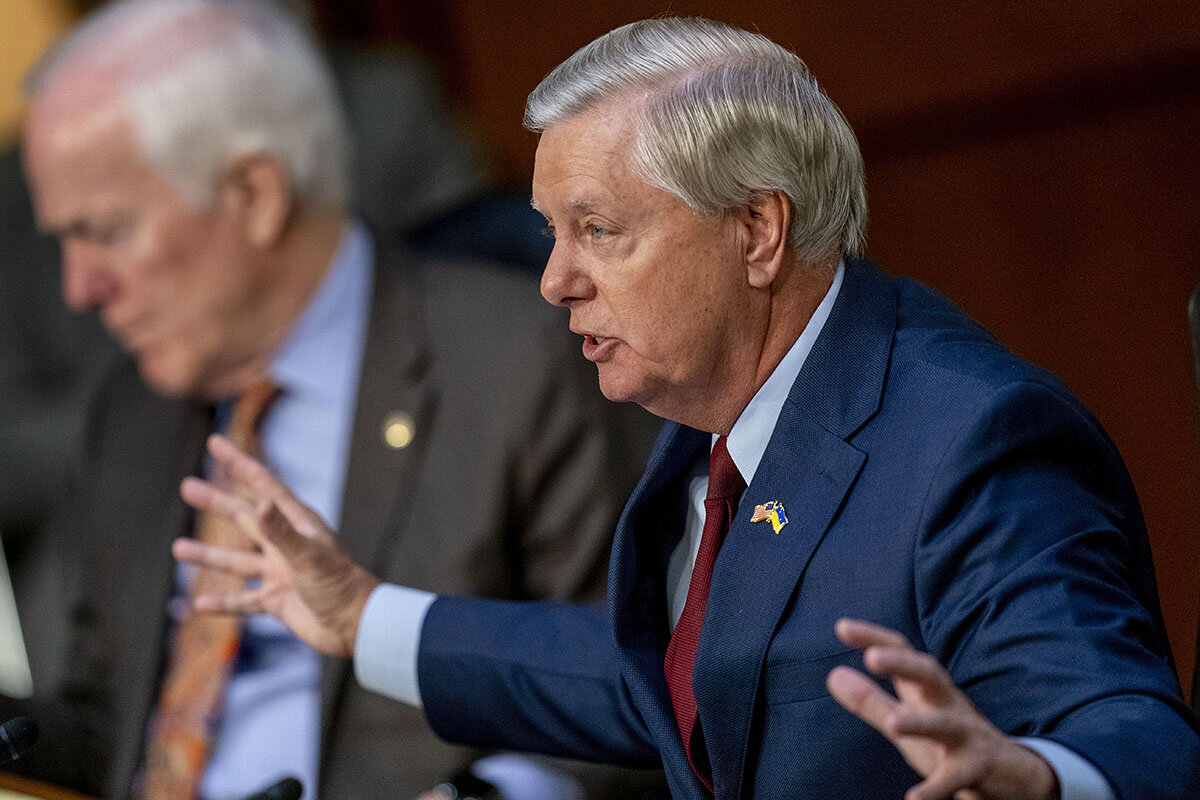
In his nearly 20-year tenure, GOP Sen. Lindsey Graham of South Carolina had never voted against a Supreme Court nominee – until today. He supported Obama nominees Sonia Sotomayor and Elena Kagan. And in 2021, he was one of three Republicans to vote for Judge Jackson’s appointment to the D.C. Circuit Court of Appeals, regarded as the second-most powerful court in the U.S.
But Justice Jackson? “That was a bridge too far for me,” he told the Monitor on the way back from a vote earlier this week.
“When you just require confirmation within the party, then you’re going to have more ideologically driven people,” says Senator Graham, who adds that he believes President Biden could have gotten more GOP support for one of his other top contenders, Michelle Childs of South Carolina, another Black woman judge who was one of Mr. Biden’s finalists. “When you have to reach across the aisle and pick up some votes from the other side, you have a more consensus pick.”
Many supporters of Judge Jackson took issue with the way Senator Graham and other Republicans treated her during the hearings, aggressively questioning her and using the proceedings to air grievances about Democratic treatment of the last GOP nominee, Justice Barrett.
“I am hearing from people, not just Black women, who are relating to me their stories about having to come into a room where you’re more qualified than the people who are sitting in judgment of you and having to endure the absurdities of disrespect that we saw Judge Jackson endure,” said New Jersey Sen. Cory Booker, a Democrat and one of the chamber’s three Black members.
More pressure from voters, outside groups
To be sure, part of that is due to the growing polarization in the country – and Congress.
“The confirmation process is going to have the same kind of mood as the country,” says Lori Ringhand, a professor at the University of Georgia School of Law and co-author of “Supreme Court Confirmation Hearings and Constitutional Change.”
Supreme Court picks have also become a bigger voting issue within each party’s base, putting pressure on senators.
“These nominations have very much become rallying cries for core voters in each party,” says Professor Ringhand. When opposition senators can’t block a confirmation, they will signal to their voters that they’re doing everything they can to stop the nominee by aggressively questioning them or putting up procedural hurdles.
And outside groups are increasingly pushing senators to apply litmus tests to nominees, says GOP Sen. Susan Collins of Maine, who faced a tough 2020 reelection campaign after her vote helped Justice Brett Kavanaugh squeak through 50-48 in 2018. The advocacy group Demand Justice ran ads against her, saying her vote went against her campaign pledges to support abortion rights.
“These outside groups ... are increasingly driving the process,” says Senator Collins, one of the three Republicans to vote in favor of Judge Jackson’s confirmation Thursday. “Think of the fact that Demand Justice hired a truck with a billboard on it demanding that Justice Breyer retire,” she says. “That would have been considered unseemly, inappropriate, a compromising of the court’s integrity and independence, even a decade ago. Now, no one’s surprised.”
This time around, Senator Collins was sharply criticized by a member of her own party, Georgia Rep. Marjorie Taylor Greene, for her support of Judge Jackson.
One key reason for the increased pressure from all sides is a changing perception of the court’s role within the broader system of American government. With Congress often gridlocked, the Court has been increasingly thrust into the position of making policy rather than just upholding it. In coming months, the court is expected to rule on key issues affecting Americans’ lives, including abortion rights, guns, voting, and affirmative action.
“The court has occupied an even more prominent place in everyday life than people recognized it as occupying in the past,” says Professor Tribe. “That is leading to a reexamination of whether the court has become too powerful and occupied too large a role.”
Staff writer Noah Robertson contributed to this report.

World’s universities offer havens to Ukrainian scholars
Universities and organizations around the world are helping Ukrainian students and professors ensure their academic pursuits are not lost. The lessons could last beyond Ukraine.

- Quick Read
- Deep Read ( 6 Min. )
Members of the global higher education community are rallying to help scholars who have left Ukraine or who are internally displaced after Russia invaded six weeks ago. Their assistance offers a lifeline to fleeing residents, but also promises less interruption to Ukrainian scholarship.
The endeavors showcase an upwelling of humanitarian spirit and, in some cases, are leading to efforts to create better institutional processes to help students and scholars from Ukraine and other conflict zones like Afghanistan and Yemen.
“The level of need is unprecedented,” says Chelsea Blackburn Cohen, acting director of network and university relations at New York-based Scholars at Risk.
Efforts to help Ukrainians range from securing academic jobs to assisting with enrollment in universities.
After spending two weeks in a bomb shelter, academic Svetlana Tarasova made her way to the Polish border. A professor in London she knew contacted her and helped her apply, while on the road, for a position in Poland, to give her stability once she arrived.
“Thanks to [the] people around [me], it is going on well,” she writes in an email from Warsaw, where she is now employed. “Still my mind is always thinking about Ukraine, Kharkiv and other cities.”
World’s universities offer havens to Ukrainian scholars

Svetlana Tarasova had planned on lecturing to her students at a university in Kharkiv and celebrating a friend’s birthday on the day that Russia invaded Ukraine. Instead she awoke to explosions and howling car alarms.
After spending two weeks in a bomb shelter, she started making her way in jammed traffic to the Polish border. Dr. Tarasova explains that by “a lucky chance or part of a miracle,” a professor in London, whom she knew from a scholarly association, contacted her and helped her apply, while on the road, for a position in Poland to give her stability once she arrived.
“Thanks to [the] people around [me], it is going on well. Still my mind is always thinking about Ukraine, Kharkiv and other cities,” writes Dr. Tarasova in an email from Warsaw, where she is working at the Polish Academy of Sciences conducting research. “How to return to normal life? How to return to joy, happiness, learn to smile. Now I am trying to find out how to do it again.”
Members of the global higher education community are rallying to help scholars who have left Ukraine or who are internally displaced after Russia invaded six weeks ago. Their assistance offers a lifeline to fleeing residents, but also promises less interruption to Ukrainian scholarship. The endeavors – which range from securing jobs and housing to assisting with enrollment in universities – showcase an upwelling of humanitarian spirit and, in some cases, are leading to efforts to create better institutional processes to help students and scholars from Ukraine and other conflict zones like Afghanistan and Yemen.
“It’s something we thought was just the right thing,” says Maciej Maryl, outreach coordinator for one of the initiatives, #ScienceforUkraine, and director of the Digital Humanities Centre at the Institute of Literary Research of the Polish Academy of Sciences. He helped start the project with other European scholars soon after the invasion. “We feel we had some contacts in Ukraine before, we feel they are part of the European scholarly community, and we want to show that these networks are strong. We’re doing what we can to stand with them.”
At #ScienceforUkraine, over 80 volunteers in 32 countries share information about paid positions, transfer opportunities, or accommodation offers. Elsewhere, a separate Google document started by a researcher has gathered more than 2,000 opportunities worldwide for academic support for Ukrainian scientists.
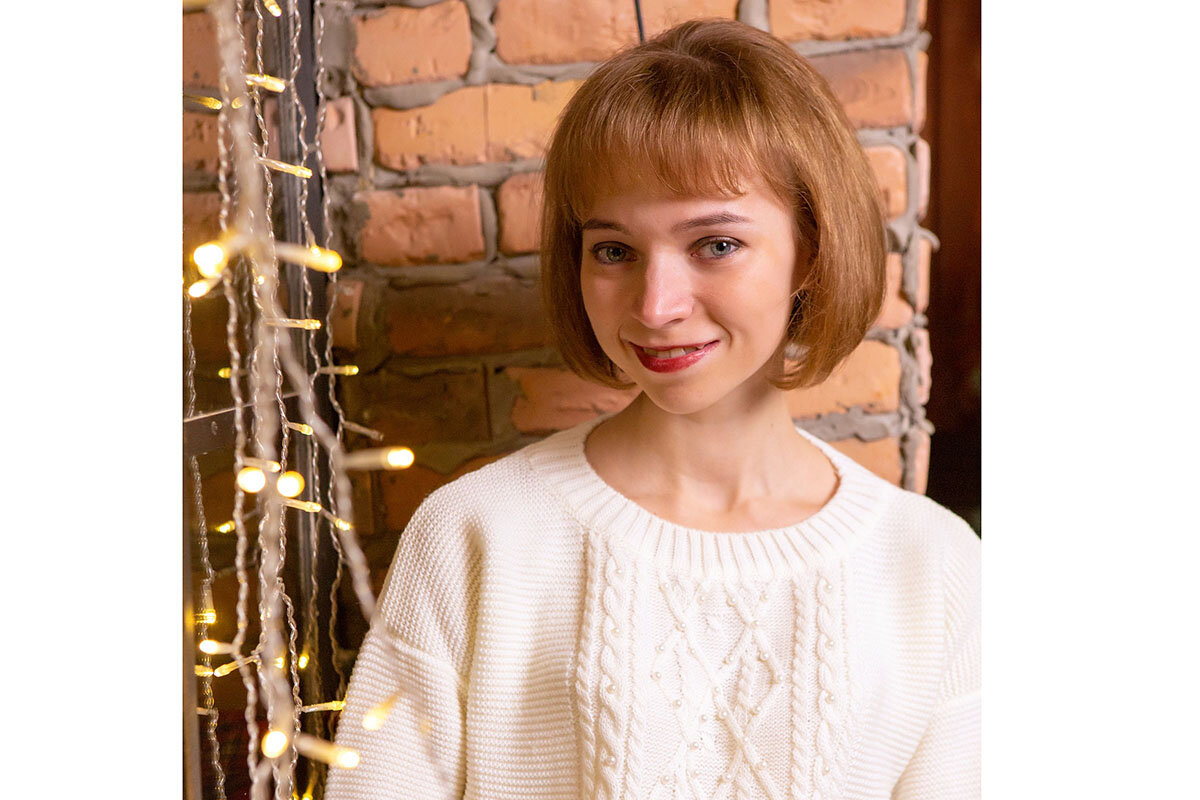
Efforts to assist students are also underway. The Massachusetts Institute of Technology started a program called Yulia’s Dream to train Ukrainian high school students in honor of a young Ukrainian mathematician recently killed in the war. The University of Chicago announced full-tuition scholarships for Ukrainian undergraduates affected by the invasion.
At Worcester Polytechnic Institute in Massachusetts, the president’s office recently convened meetings of faculty and staff members interested in creating systems to help people from Ukraine and other conflict zones.
“It’s looking at structures and our expertise and what WPI has to offer to help,” says Renata Konrad, an associate professor of operations and industrial engineering at WPI, who returned in January from serving as a Fulbright scholar in Lviv, Ukraine.
Dr. Konrad informally recruited colleagues at WPI to remotely advise 11 students at Ukrainian Catholic University in Lviv on their capstone projects after hearing from contacts that the university still offered remote learning but lacked sufficient instructors due to professors joining the military. Twice a week, Dr. Konrad meets via video call with her advisee, who is sometimes in a bomb shelter. The student’s capstone is on inventory management study based on her volunteer work at her university helping to sort and disperse donations flooding in from abroad.
Olga Polotska, executive director of the National Research Foundation of Ukraine, emphasizes the importance to the country of Ukrainian scientists continuing to work. “Researchers are the ones who develop new knowledge,” she says, speaking from the outskirts of Kyiv on a darkened Zoom call, to obey evening blackout orders. “This is the most important thing. New knowledge is the basis for development.”
Dr. Polotska and her staff are calling on international institutions to make efforts to help not only Ukrainians forced to leave, but those who remain. They compile assistance offers on their website.
“Since not all Ukrainian scientists are able to leave or willing to leave Ukraine … remote fellowships would be a very good solution,” she says. “Every day we receive more offers with remote positions.”
An “unprecedented” need
Scholars at Risk, a network that links scholars in need with institutions globally, has received roughly 200 applications from Ukrainian scholars since the war started, along with another 200 applications from Russian scholars, and expects more to come. That’s nearly as many applications as the organization received in the entire past academic year, but not as many as they’ve received from scholars in Afghanistan – nearly 1,500 – since the Taliban gained control in August.
“The level of need is unprecedented,” says Chelsea Blackburn Cohen, acting director of network and university relations at Scholars at Risk, housed at New York University.
Threats to academics have been rising for years with conflicts in Afghanistan, Yemen, Myanmar, and Cameroon, among others, says James King, director of the Scholar Rescue Fund at the Institute for International Education in New York. Between 2016 and 2021, applications to the fund more than doubled.
“The world and the international higher education community, we’ve all turned our focus on the war in Ukraine, with very good reason, but I do think it’s really important that we don’t forget or neglect our colleagues from across the globe,” says Mr. King. “There are more threatened and displaced scholars today than ever before.”
Some institutions are working on expanding their ability to help people in need. At the University of Pittsburgh, a small, three-person team at the Global Studies Center started the Pittsburgh Network for Threatened Scholars in 2019, a partnership between university departments, city nonprofits, and private businesses. The network grew from two scholars to 11 currently on campus, with plans for at least four more scholars from Afghanistan to arrive this fall.
Veronica Dristas, associate director of the Global Studies Center, is working with other regional colleges and universities to start an expanded network to collaborate on hosting scholars.
Schools need to be prepared to offer holistic support like housing and health care, she says. In return, scholars aid their host campuses by bringing their expertise and worldview.
“It’s a goodwill gesture, but it’s also beneficial to the university to have renowned scholars coming and staying some time with us and giving them the opportunity to build a curriculum here in the U.S.,” she says.
Plans to return
Some scholars who have left Ukraine are already thinking about when they’ll return. Maryana Sytar was working on her doctoral studies at the Koretsky Institute of State and Law of the National Academy of Sciences in Kyiv when the war started. Her advisor urged her to apply for a new emergency fellowship fund offered to Ukrainian graduate students by Tel Aviv University in Israel.
Ms. Sytar applied and received an offer including full tuition and a living stipend for a six-month stay on campus. She arrived in Tel Aviv on March 17.
“I hope I will gain a positive experience that can be effectively applied in my country,” Ms. Sytar writes in an email. At the end of the Russian invasion, she adds, “the priority tasks will be not only the development of our country in terms of rebuilding the destroyed infrastructure facilities ... but also the enrichment of Ukraine’s intellectual resources.”
Dr. Tarasova, who keeps busy with her job and exploring Warsaw, doesn’t know how long she’ll be out of Ukraine. “I do not want to set any certain plans or limit myself by time. Life has taught me that it is impossible to plan something,” she writes over email. “I dream of seeing my Ukraine modern, stable and prosperous, united and friendly, in which all the best is in the near future.”

Reviving Navajo identity, one sheep at a time
In the Navajo Nation, a connection to heritage and identity was lost when the U.S. government nearly exterminated Navajo-Churro sheep. Today, flocks are on the rebound, signaling hope on the reservation.

- Quick Read
- Deep Read ( 7 Min. )
The Navajo, who refer to themselves as Diné, have long been a pastoral society. Sheep are prominent in their creation myths, and after Spanish colonists first brought the churro sheep to the Southwest, the hardy, adaptable breed became, over centuries, the heart of a self-sufficient economy and vibrant Diné culture.
But the days of sheep camps and flocks roaming the arid plains and valleys here are long gone. On two separate occasions the churro came close to full extermination. From over 1 million head at one time, by 1977 there were fewer than 500 left in the world. After decades of efforts to repopulate the breed, scientists believe there are now over 8,000.
As the sheep rebound, they are filling a cultural and economic void that was left by a massive “livestock reduction” in the 1930s, when the U.S. government ordered nearly all of the sheep killed.
“That connection to the sheep is the connection to the land, which is the connection to the culture, which is the connection to the spirituality of the Diné people,” says Alta Piechowski, a career psychologist for reservation schools. “This is another beginning for us.”
Reviving Navajo identity, one sheep at a time
Irene Bennalley steps out into the fierce afternoon sunlight wearing jeans and a maroon sweater, her long gray hair knotted in a braid.
Brandishing a long white stick as her crook, she picks her way across her parched desert farm toward the sheep pen. Answering their bleats with firm instructions in Navajo, she shepherds them out onto the dry, dusty range.
She doesn’t know exactly how many Navajo-Churro sheep she has, but she ballparks it at around 100 head. It’s bad luck to keep exact counts of your livestock, her father taught her. Don’t boast about your animals, he would say, or they’ll start dropping.
Out here, ranchers like Ms. Bennalley can’t afford to lose animals. The winters are cold and hard, and the summers are hot and relentless. Water is scarce and feed is expensive. It’s the main reason she has come to love the breed, known colloquially as churros, that she’d grown up only hearing about in stories.

The Navajo, who refer to themselves as Diné, have long been a pastoral society. Sheep are prominent in their creation myths, and after Spanish colonists first brought the churro sheep to the Southwest, the hardy, adaptable breed became, over centuries, the heart of a self-sufficient economy and vibrant Diné culture.
But the days of sheep camps and flocks roaming the arid plains and valleys here are long gone. On two separate occasions the churro came close to full extermination. From over 1 million head at one time, by 1977 there were fewer than 500 left in the world.
Efforts have been gaining momentum in recent years to rebuild the breed and return flocks to the Navajo Nation. Decades of painstaking, sometimes dangerous, work by a handful of committed ranchers and animal scientists have helped restore the population to over 8,000.
Now, people on the Navajo Nation are working to bring flocks back to the reservation, to try and fill the economic and cultural void left by their near extinction.
“We’re back in a place of reevaluating how we live,” says Alta Piechowski, whose family has been involved in restoring the Navajo-Churro for decades.
“When you’re walking the land [with the sheep], there’s a different kind of healing,” she adds. “It heals your heart, and when it heals your heart you’re going to want other people’s hearts to be healed too.”

Ties to identity
The Navajo-Churro is a striking breed, almost perfectly designed for the dry, rugged Navajo Nation.
An “unimproved” breed – meaning one that hasn’t been selectively bred for market – churros are long and lean, with thick, double-coated fleece (coarse outercoat and a fine undercoat) that comes in a range of natural colors. Rams and ewes can both grow horns – as many as four at once. They are resistant to most diseases, and have adapted over the centuries to thrive in the dry, low-forage climate of the Southwest.
For the Navajo people, the churro were something of a panacea. They provided a healthy and sustainable source of food and income; their many-colored fleece are ideal for weaving iconic Navajo blankets. And culturally, sheep have always been prominent in Navajo spiritual traditions. One of the six sacred mountains that bound the Navajo Nation, Dibé Nitsaa, translates to Big Sheep Mountain.
But for the best part of a century, Navajo-Churro have been hard to find on the reservation.
The official term used by the U.S. government in the 1930s was “livestock reduction.” The Midwest was in the grips of the Dust Bowl, and the Bureau of Indian Affairs, led by commissioner John Collier, concluded that too many livestock were causing land to erode and deteriorate.
The policy resulted in the slaughter of hundreds of thousands of churros, often on the reservation, and sometimes on the properties of their owners.
And it came after the Navajo people had spent over 70 years steadily rebuilding their churro herds. The U.S. Army killed swaths of livestock as part of a scorched-earth campaign against the Navajo in the 1860s. In 1868, part of a treaty that saw the Navajo people return to their sacred lands gave each family two sheep to start breeding herds again.
Nearly a century since the stock reduction, the collective memory is still raw. Ms. Bennalley speaks mournfully of what she calls “the John Collier days.” For a long time no one spoke of it at all.

“Some people never really got out of losing their sheep that way,” says Ms. Bennalley. “My family, my dad, nobody really talked about it, because it wasn’t something to be proud of.”
While there is evidence that Mr. Collier and others genuinely thought they were helping the tribe, many Navajo people see little difference in what the U.S. government did in the 1930s and what the U.S. Army did in the 1860s: attempted forced assimilation.
“That connection to the sheep is the connection to the land, which is the connection to the culture, which is the connection to the spirituality of the Diné people,” says Dr. Piechowski, a career psychologist for reservation schools.
“If you exterminate the sheep, you’re pretty much eliminating [those] connections,” she adds. “In that way, we were an easy target.”
Flocks for the future
The churro never disappeared from the reservation, but the few that remained stayed hidden in some of the reservation’s most remote corners – so remote that the man who first led efforts to bring the churro from the brink of extinction almost died trying.
In the early 1970s, Lyle McNeal saw his first churro: some stunning four-horned rams on a ranch in the Salinas Valley. He convinced the rancher to give him six breeding ewes and two four-horn rams (one black and one white). Thus, the Navajo Sheep Project was born. Dr. McNeal and his students formed and tended a “nucleus flock” of churros in California, and beginning in 1977, he began visiting the Navajo Nation to search for more. He estimates there were just a few hundred remaining on a reservation the size of West Virginia.
With the help of Navajo students, they would track down families with churros. To build trust, he would offer to buy one sheep, then bring back two after they’d bred – surviving perilous snowy mesas and flash floods to deliver them. Dr. McNeal now believes there are as many as 9,000 Navajo-Churro around the country.
Many of them are on the Navajo Nation itself, but they are still far from the economic and cultural presence they used to be. In a time when there are easier ways to make a living on the reservation than keeping livestock, it’s possible the churro will never be such a core feature of Navajo society again.
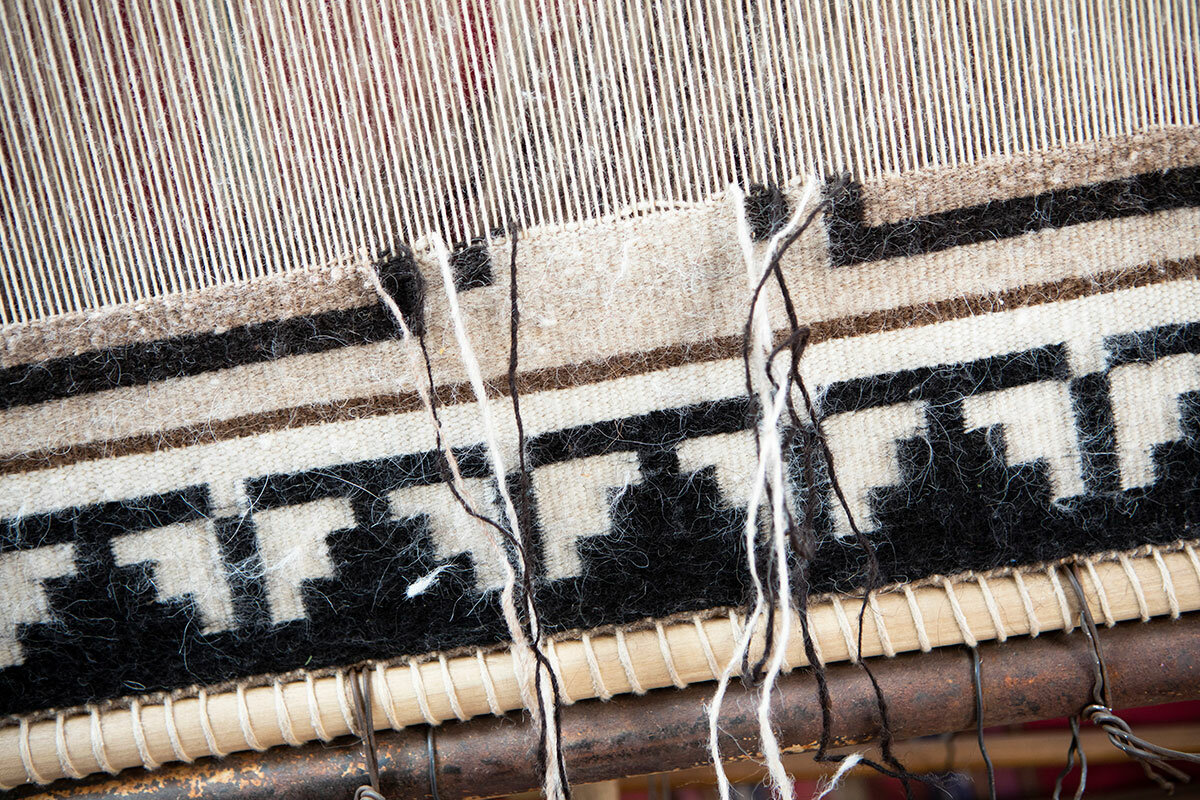
Ms. Bennalley grew up on her ranch with Dibé Nitsaa a fixture on the northern horizon. Her father taught her to raise and care for their animals, and to not cry when you lost one, because you always gain some soon after. (That was a difficult lesson for her at first.)
And he taught her about the churro, after she saw her first one – a striking four-horn – on the side of a road. She got her own a few years later: a ram she leased from the Navajo Sheep Project, named Dibé Nitsaa, for the sacred mountain.
It relaxes her to be out here on the range with the sheep. Spinning and weaving with their wool calms her as well. But more than anything, she says, the churro have given her a livelihood.
“I don’t have to depend on the government or handouts or any kind of assistance,” she says.
“The sheep have helped me,” she adds. “The sheep is the one that’s providing for me.”
Dr. Piechowski says rebuilding the churro population can do that, and more, for the Navajo.
Her father grew up with churros, and now she is helping to establish the Hozho Center, a nonprofit organization that will be based on 2,000 acres of private land with the broad goal of revitalizing the traditional Diné economy and culture. The center will house a permanent flock of Navajo-Churros, to help repopulate the breed on the reservation and restore the culture around them.
Physical and psychological benefits could also pair the economic and cultural benefits, Dr. Piechowski believes. More churro meat in the Navajo diet could help tackle the high rates of diabetes and food insecurity on the reservation, for example. The churro can be “a healing tool,” she says.
The Hozho Center is something of a retirement project for her, after 35 years of working with schoolchildren.
“We’ve been traumatized over and over. … You see it in the schools. You see young people carry a lot of trauma,” she says. “We don’t know how to live with each other anymore.”
“We can’t totally go back to how it was, but we can attempt to have more of a positive relationship with our Earth and a more positive relationship with other people,” she adds. “This is another beginning for us.”

Giving back: Can Tunisia revive unused trusts?
In Tunisia, an ancient Islamic social welfare system of charitable trusts, underutilized for decades, is seen by some as a way to lighten the burden on a cash-strapped government.

- Quick Read
- Deep Read ( 6 Min. )
In Tunisia, as the economy falters, unemployment soars, and the ranks of vulnerable people swell, activists are seeking to give new life to a centuries-old social safety net.
Seven decades after the country cast off the vestiges of the traditional Islamic welfare system known regionally as waqf, and popularly in Tunisia as habous, advocates are urging Tunisians and the debt-riddled government to give it another chance.
While only a handful of individual Tunisians carry on the tradition today, the creation of charitable trusts – the word waqf refers to an endowment – was once a dominant practice in Tunisia. Under this system, citizens would donate a portion of their salary, profit, or agricultural production to a trust, which would be managed in perpetuity to support poor people and the community.
Mohammed Bennani, a historian and archivist, provides weekly lunches as part of the habous his grandfather started in 1909 that put three shops and a piece of farmland in a trust. Most weeks his guests include university students, writers, and artists.
He vows to carry on the tradition to honor his grandfather’s will and pass on the spirit of giving. “Systems of governance and laws may change,” he says, “but the need to support one another is timeless.”
Giving back: Can Tunisia revive unused trusts?
Mohammed Bennani carefully balances a platter of steaming couscous in his hands, carrying it to a table in the courtyard of his family home in Tunis’ old Medina on a brisk January Wednesday.
The guests? Whoever shows up.
The free weekly meal is open to all, but Mr. Bennani is not running a charity kitchen. This is his inheritance.
“My grandfather donated a portion of his fortune to help others, and it is up to us to continue this tradition until the end of time,” Mr. Bennani says. “This is how we were raised: You respect the waqf.”
In Tunisia, as the country’s economy continues to falter, unemployment soars, and the ranks of vulnerable people swell, activists are seeking to breathe new life into a centuries-old Islamic social safety net.
Seven decades after the country cast off the last vestiges of the traditional social welfare system, advocates’ message to Tunisians and the debt-riddled government alike is the same: Give waqf a chance.
Not just the wealthy
Although only a handful of individual Tunisians carry on the tradition today, the creation of charitable trusts – the word waqf refers to an endowment – was once a widespread practice in Tunisia. Under this Islamic system, citizens would donate a portion of their salary, profit, or agricultural production to a trust, which would be managed in perpetuity to support poor people and the community.
While elsewhere in the Islamic world waqf saw wealthy individuals bequeath lands or establish trust funds to support mosques and schools, in Tunisia the practice, known colloquially also as habous, relied on a much broader base.
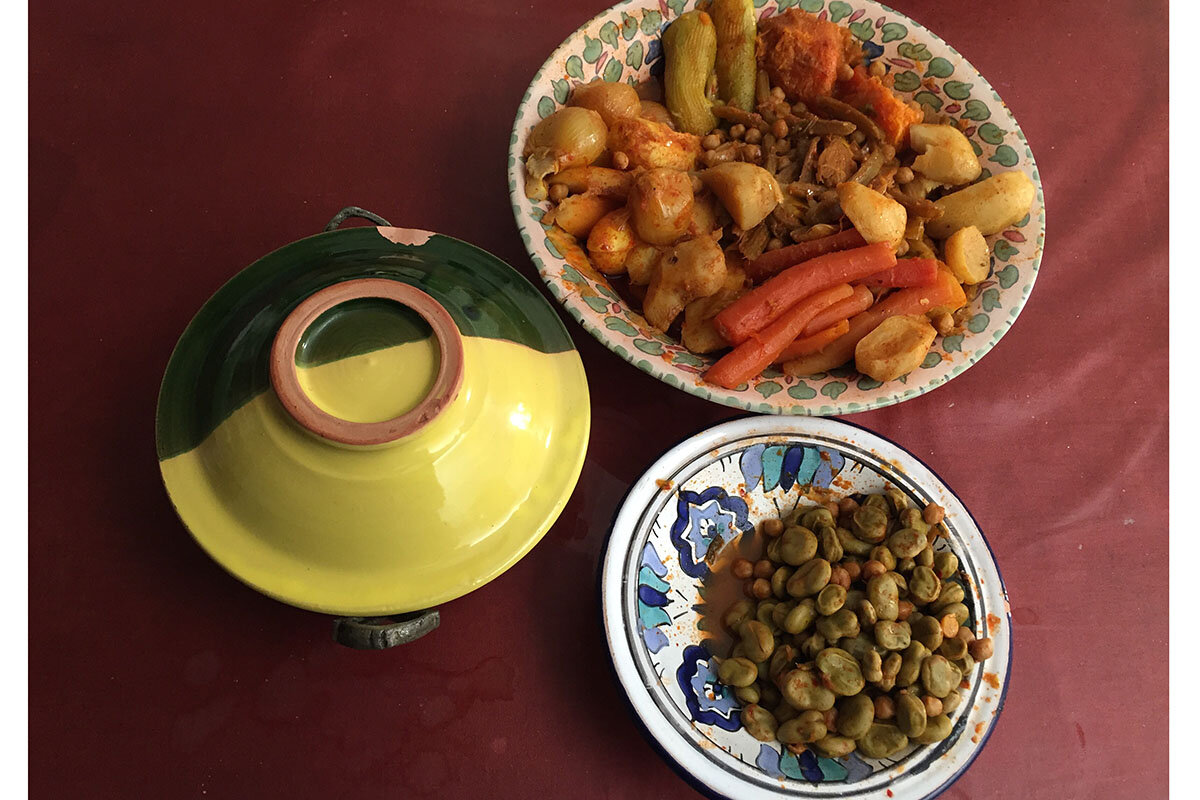
Between the 10th and 19th centuries, donations from middle-class and working-class Tunisians, artisans, business owners, bakers, and baristas were used to fund public works as Tunisia grew into a center of learning, trade, and culture.
“Waqf was designed to support the community,” says Mohsen Ettamimi, an imam and former member of Parliament who has researched and documented hundreds of waqf charitable trusts in the holy city of Kairouan. “It was a social support network that was derived from the people but organized, audited, and managed by the authorities.”
Cafes, hammam baths, hotels, and even grocery shops were donated, and then run by trusts, their profits used to build and support hospitals, schools, and housing. By the 19th century, one-third of all land in Tunisia was reserved as waqf trusts.
In his efforts to build a modern state in the 1950s, Tunisia’s post-independence leader President Habib Bourguiba did away with the waqf system, which by then had become entangled in inheritance disputes.
In his new, socialist state, the government would provide for the people and citizens would pay their taxes directly to the state.
Government struggles
Yet today, with unemployment at 14.9%, the national debt at 94% of gross domestic product, and inflation and poverty on the rise, that socialist system too is outdated. The Tunisian government is struggling to provide basic services, pay public sector workers, and provide health care to a population reliant on public services.
Social entrepreneur Leila Ben Gacem, whose Blue Fish organization helps create opportunities for dozens of struggling Tunisian artisans, is championing habous as a solution, both conceptually and as an untapped resource.
“Social entrepreneurship is not an American or European concept; it is a Tunisian concept developed right here several centuries ago in the form of habous,” says Ms. Ben Gacem. “And unlike other forms of charity or government safety nets, it is self-generating and sustainable.”
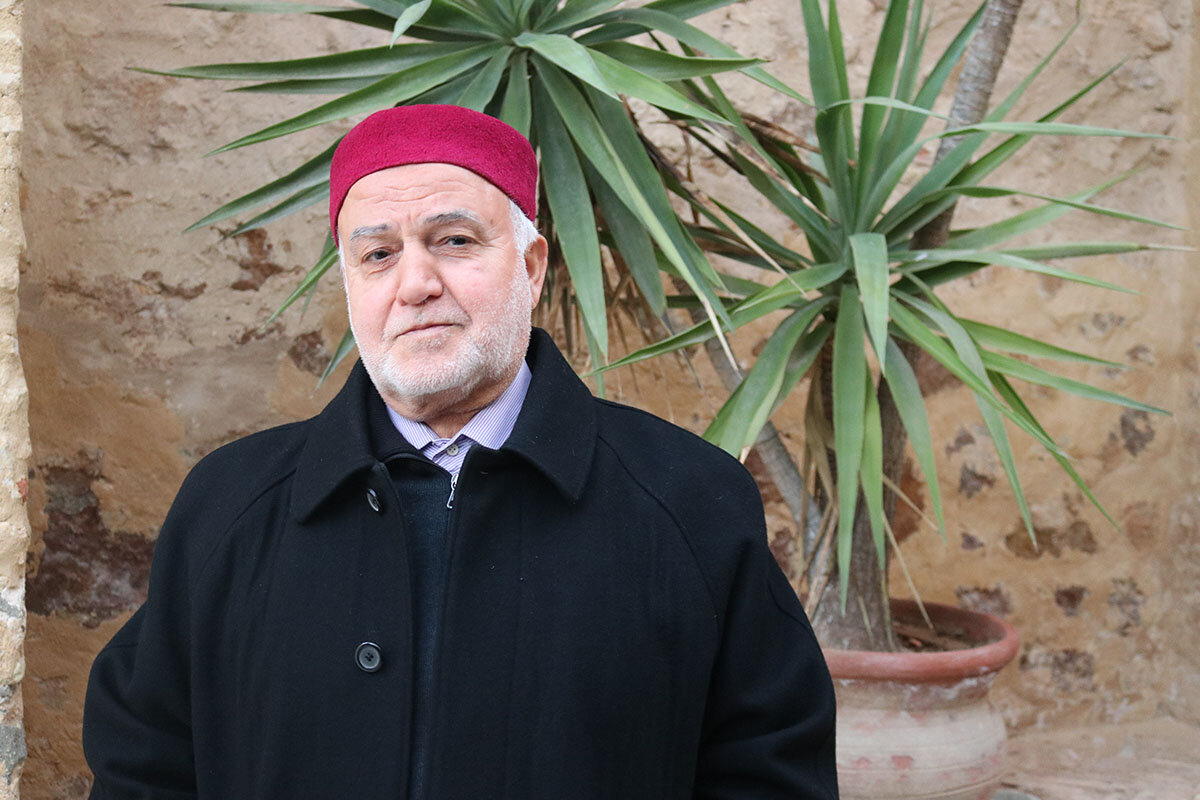
Ms. Ben Gacem promotes waqf as a solution that would break down the rigid separation between the private sector and charities in modern Tunisia that many believe has placed the social support burden too heavily on the shoulders of government.
“When it comes to capitalism and charity, it is not ‘either/or.’ Waqf proves you can both have a profitable business and help others,” says Ms. Ben Gacem. “We need to educate Tunisians that there is a third way developed from our own culture and experience.”
A resource in limbo
Today, Tunisia’s cities and countryside are scarred by crumbling shops, disused and overgrown farmland, and decrepit buildings – all unclaimed waqf properties left in limbo by the Bourguiba government’s 1957 decree ending the system.
Families with historical claims but no documentation cannot reclaim or utilize their ancestors’ habous properties.
Historic schools and student housing under the government’s control alternate between being shuttered for vague, decadelong renovation projects and lying empty.
Religious sites, too, are just scraping by.
Today, shrines and historic mosques rely on the modern, 21st-century concept of waqf: donation boxes placed at the entrance.
Curators say this “spare-change charity” is no substitute for self-generating endowments.
At Kairouan’s Sidi Sahib Zawiya and Madrassa, the brilliant-tiled 17th-century shrine and tomb of Abu Zama al Balawi, a companion to the Prophet Muhammad, staff walk around literally with their palms opened, hoping visitors can spare a few dinars to help pay for upkeep and staff salaries.
“Habous used to pay for the schooling of students across the Islamic world from as far away as Pakistan who would come here to Kairouan to study,” Zuhair Haddad, keeper of the shrine, says as he leads a tour through its vibrant turquoise ceramic-tiled courtyard. “Now the occasional donations barely pay for cleaning supplies.”
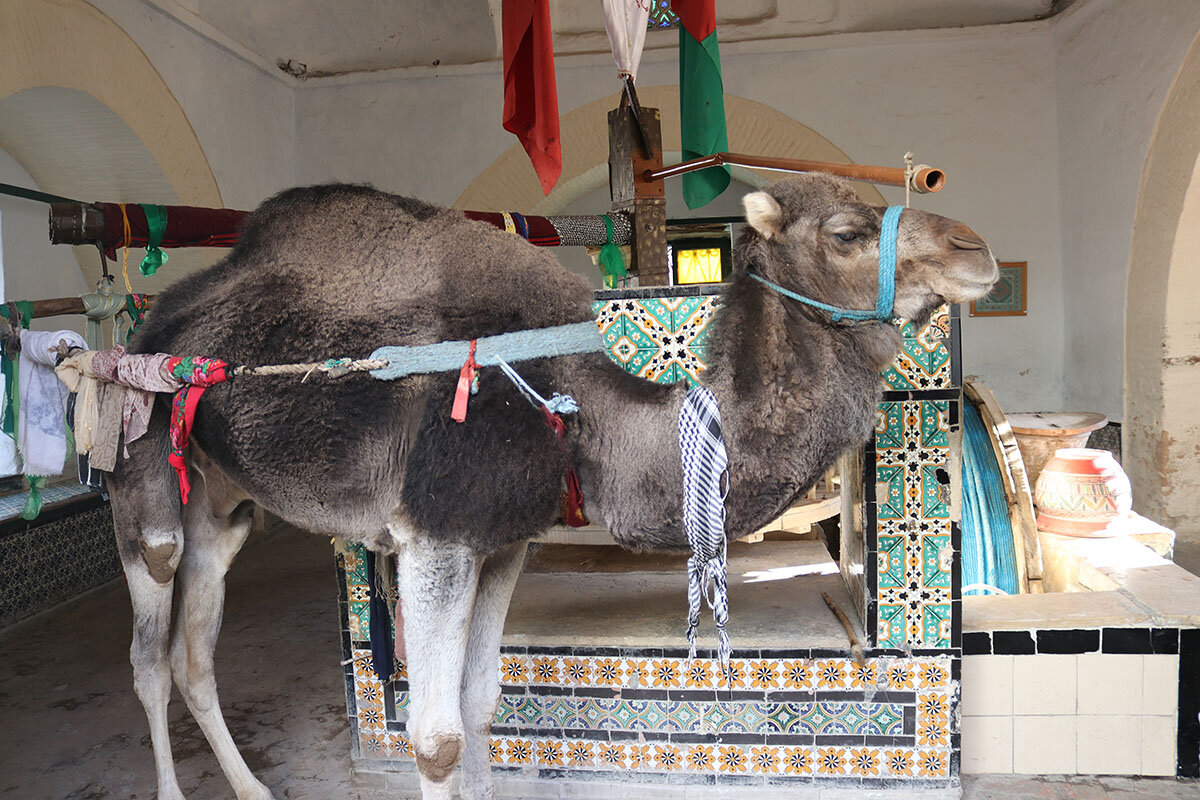
Political hurdle
Since their 2011 democratic revolution, Tunisia’s leaders have tried their hand at reviving the system.
Less than a year after shaking off the yoke of dictator Zine el-Abidine Ben Ali, a review of the habous system was atop their agenda in 2012. A government-formed committee examined hundreds of frozen or unclaimed waqf properties and concluded they were an untapped resource that could help fund the country’s post-revolution transition.
But the committee’s recommendation to reform the system was met with liberal and secular opposition amid suspicions that waqf advocates were scheming to use the proceeds from the trusts to support the powerful Islamist Ennahda Party.
“Anybody who spoke of religious affairs was seen as Islamist or part of Ennahda. Waqf became a polarizing issue and unfortunately remains so until today,” says Mounir Tilil, a former religious affairs minister and chair of the waqf committee. “When in fact this is a legal, socioeconomic issue, not a religious one.”
“We have closed one important door for our society rather than fix it. It has become a nonstarter.”
Yet individual Tunisians continue to carry on the tradition themselves, insisting that waqf is above the dividing lines of politics and religion.
Mr. Bennani, a historian and archivist, continues the weekly lunches as part of the habous his grandfather started in 1909 that placed three shops and a piece of farmland in waqf.
Mr. Bennani has made his own alterations along the way, moving the meal from post-Friday noon prayers to Wednesday to make it “less religious and more inclusive.” He has replaced lamb with vegetables on the couscous.
Most weeks his guests are university students, researchers, writers, artists, and poets – the hearty home-cooked meal a balm for those far away from home, much like the waqfs in Kairouan that supported students from far-flung towns a millennium ago.
On this rainy and cold Wednesday, only two people show up.
But Mr. Bennani vows to carry on the tradition no matter the turnout to honor his grandfather’s will – and to pass on the spirit of giving.
“Systems of governance and laws may change, but the need to support one another is timeless,” he says. “Giving back is a universal form of faith.”
Other headline stories we’re watching
(Get live updates throughout the day.)The Monitor's View
Pakistan’s victory for rule of law
- Quick Read
- Deep Read ( 3 Min. )
-
By the Monitor's Editorial Board
After a tense five-day political standoff that left Pakistan without a government, the Supreme Court ruled on April 7 that Prime Minister Imran Khan “was not within his rights” when he dissolved Parliament to thwart a vote to remove him from power.
The high court’s decision did more than affirm the constitutional separation of powers and the principle of rule of law. It demonstrated that judicial independence can thrive in a country that defines its national identity on the basis of Islam. The unanimous decision immediately reinstated the National Assembly and spells a political end for a leader who rose to power on his popularity as Pakistan’s most beloved sports hero.
A fragile democracy since independence in 1947, Pakistan has yet to see a single prime minister serve a complete five-year term. The military is notorious for meddling in the country’s political affairs. Significantly, however, a 2010 constitutional amendment transferred the power to appoint judges from the president – an office that combines ceremonial political functions and commander in chief of the armed forces – to a panel of judicial peers.
Pakistan’s victory for rule of law

After a tense five-day political standoff that left Pakistan without a government, the Supreme Court ruled on April 7 that Prime Minister Imran Khan “was not within his rights” when he dissolved Parliament to thwart a vote to remove him from power.
The high court’s decision did more than affirm the constitutional separation of powers and the principle of rule of law. It demonstrated that judicial independence can thrive in a country that defines its national identity on the basis of Islam. The political fallout of the ruling may also deprive Russian President Vladimir Putin of a key ally at a pivotal moment in the war in Ukraine.
The unanimous decision immediately reinstated the National Assembly and spells a political end for a leader who rose to power on his popularity as Pakistan’s most beloved sports hero. A former captain of the national cricket team, Mr. Khan has overseen a disastrous economic record since being elected in 2018, as well as a sharp diplomatic shift away from the West. He lost his parliamentary majority last Sunday. The legislature will now vote Saturday on whether to replace the prime minister.
“It’s a bold but much welcome move by the Supreme Court, especially for constitutional supremacy,” Marva Khan, a law professor at Lahore University of Management Science, told Bloomberg. “Having a unanimous judgment on the matter further strengthens the value of this precedent.”
A fragile democracy since independence in 1947, Pakistan has yet to see a single prime minister serve a complete five-year term. The military is notorious for meddling in the country’s political affairs. Significantly, however, a 2010 constitutional amendment transferred the power to appoint judges from the president – an office that combines ceremonial political functions and commander in chief of the armed forces – to a panel of judicial peers. That contrasts sharply with other Islamic countries like Iran and Saudi Arabia, where Islamic law predominates and judges are subordinate to influential religious leaders.
The reform 12 years ago has had a measurable effect. A 2020 study found a decrease in the appointment of judges with past political careers. Courts have better restrained the government’s misuse of eminent domain in taking private property. In general, judges have displayed greater impartiality in rulings against the government. That corresponds with international studies that show a strong link between judicial independence and overall development.
Mr. Khan himself provided another measure of the reform’s effect. The embattled prime minister emerged from a meeting with legal advisers ahead of the court ruling and vowed to accept whatever decision it made.
The court effectively quashed an allegation by Mr. Khan that the bid to oust him was a “foreign conspiracy” orchestrated by Washington. The person most likely to benefit from its decision is Shehbaz Sharif, an opposition leader and brother of former Prime Minister Nawaz Sharif. The military has already signaled its interest in re-prioritizing ties with the West after Mr. Khan’s drift toward China and Russia. A first order of business for a new caretaker government will be setting a course for elections and resetting dialogue with lenders like the International Monetary Fund.
For the moment, however, a constitutional crisis has been averted and a key democratic norm reaffirmed.

A Christian Science Perspective
Each weekday, the Monitor includes one clearly labeled religious article offering spiritual insight on contemporary issues, including the news. The publication – in its various forms – is produced for anyone who cares about the progress of the human endeavor around the world and seeks news reported with compassion, intelligence, and an essentially constructive lens. For many, that caring has religious roots. For many, it does not. The Monitor has always embraced both audiences. The Monitor is owned by a church – The First Church of Christ, Scientist, in Boston – whose founder was concerned with both the state of the world and the quality of available news.
The spiritual waymarks that keep us safe
- Quick Read
- Read or Listen ( 2 Min. )
-
By Roger Whiteway
If we find ourselves in troubled waters – whether literally or figuratively – we can look to God for inspiration that guides and protects.
The spiritual waymarks that keep us safe

There have been times when I’ve found myself in troubled waters, searching for a path that leads to a safe harbor. And I find I can rely on God’s waymarks to keep me in the deep-water channel of the Divine – and off the rocks of disappointment, fear, and despair.
In my United States Navy training as a midshipman, I learned how to identify channel markers, buoys, and lighthouses that enabled me to fix my position, to prevent going aground as I entered or departed a harbor.
“Science and Health with Key to the Scriptures” by Mary Baker Eddy, a follower of Jesus and the discoverer of Christian Science, is full of metaphysical channel markers that enable us to reestablish our position relative to God, the divine Principle of being. Here’s one that I go back to often: “According to divine Science, man is in a degree as perfect as the Mind that forms him” (p. 337). That Mind is God. And the “man,” that’s your and my eternal and safe spiritual selfhood.
As a boy, I loved body surfing. One day, looking for bigger waves, I kept moving farther out from shore and soon found myself pulled out to sea in a rip current. I was no match for the current, and I needed to find a way out.
I turned onto my back, looked up at the sky above, and began praying for inspiration – listening for the spiritual waymarks that I had been learning in the Christian Science Sunday School. One was that all things are possible to God.
God holds all of us, His spiritual sons and daughters, safe in His care at every moment. When we’re open to this spiritual fact, we experience it more readily in our daily lives.
Rather than start a frenzied search for the shoreline, I just stayed quiet, treasuring that idea that nothing is impossible to God. I have no idea how long I was floating on my back like this when suddenly I was lifted up on a wave and tumbled onto the sand, safe and sound.
Since that day, there have been other occasions when I’ve found myself in troubled waters, whether literally or figuratively. But by turning to God and listening for spiritual waymarks, I’ve always been directed to a path that leads to – or better said, reveals – our safety in God.
Adapted from the March 24, 2022, Christian Science Daily Lift podcast.
For a regularly updated collection of insights relating to the war in Ukraine from the Christian Science Perspective column, click here.

A message of love
Food relief – and a patient wait

A look ahead
Thank you for joining us today. Please come back tomorrow when our Stephanie Hanes looks at how one organization in Florida is part of a broader push to re-imagine the way American society values, understands, and helps children.


